|
HOME: www.hiltonpond.org |
|||
|
|
|
COSTA RICAN CHAYOTE, Sechium edule: Our most-previous installment of "This Week at Hilton Pond" was a gallery of hummingbirds we captured in mist nets during a November 2011 Operation RubyThroat expedition to Ujarrás, Costa Rica. Our study site is east of Cartago in the middle of 1,500 acres of commercial Chayote, Sechium edule (below). This tasty native squash, grown for export and in-country use, is cultivated on six-foot-tall horizontal trellises that become covered by the vine's lush foliage. We caught and banded 44 Ruby-throated Hummingbirds, Archilochus colubris, that had fledged somewhere in the eastern U.S. or southern Canada and flew south for the winter; these were the first RTHU ever banded in the Ujarrás Valley and among very few captured on Costa Rica's Caribbean Slope. Our permit from the U.S. Bird Banding Lab authorizes us to apply bands only to Neotropical migrants, but since mist nets aren't very selective we also snared and got to handle and photograph 12 other resident (non-migratory) hummingbird species.
All text & photos © Hilton Pond Center Even though 13 species captured might seem like a lot, our citizen scientists and/or expert guide and colleague Ernesto Carman Jr. sighted still other types of hummingbird species within the Chayote. Incredibly, our final list included 22 hummer species observed from late October through mid-November--nearly HALF the kinds of trochilids that occur in the entire country of Costa Rica! Now that the cat's out of the bag about numbers and varieties of hummers at Ujarrás, we predict those Chayote fields soon will become a popular destination for folks interested in adding lots of tropical hummingbirds to personal life lists in a short period of time. Table One below is a tally of all the hummer species we encountered. Table One: Late October through early November 2011 *Stripe-throated Hermit, Phaethornis striigularis
All text & photos © Hilton Pond Center One significant aspect of the list is it includes three species Ernesto says have not been reported from the Ujarrás Valley: Blue-throated Goldentail, Magenta-throated Woodstar, and Canivet's Emeralds. Although our group did not see one, Ernesto also was able to photograph a Snowy-bellied Hummingbird, Amazilia edward (above), feeding on Chayote nectar, thereby providing conclusive documentation for the first sightings of this hummer on the entire Caribbean Slope.
All text & photos © Hilton Pond Center Special mention must be made for one other unusual species--Veraguan Mango, Anthracothorax veraguensis--which has uncertain status in Costa Rica. This species strongly resembles the Green-breasted Mango except it lacks a black keel stripe. Sources say the Veraguan Mango appears to be expanding its range from Panama into Costa Rica's Pacific lowlands, and at Ujarrás in late October ornithologist Julio Sanchez photographed one bird (above) that definitely looked Veraguan. Hummingbirds & Chayote It's no accident at least 22 hummingbird species were present in the Ujarrás Valley from late October through mid-November 2011. During those months the annual rainy season is coming to an end on Costa Rica's Caribbean side, and many species of native flora--trees, shrubs, and herbaceous plants alike--are still waiting for the dry season to begin flowering. Since the vast Chayote fields ARE in full bloom at that time of year, hummingbirds of all sizes are drawn toward a concentrated source of easily available nectar. It's not an exaggeration to say during our Operation RubyThroat expedition the Chayote fields were aswarm with hummers.
All text & photos © Hilton Pond Center We believe we have discovered an entirely different scenario in the Chayote fields at Ujarrás. A member of the Cucumber Family (Cucurbitaceae), Chayote absolutely requires pollination to bear fruit. Chayote is monoecious with male and female flowers on the same plant; male and female flowers are somewhat different in form,
All text & photos © Hilton Pond Center One of the more pleasant aspects of our study site at Ujarrás was the near absence of insects; no mosquitoes, biting flies, or other pesky little arthropods. This was great news for us humans but not so good for Chayote that in its wild state likely depends on insect pollinators--especially tiny stingless bees in the genus Trigona. (We took the photo above of an undetermined species of Trigona at their nest in Guanacaste; the bees--typical of their genus--are less than a quarter-inch long.) Other researchers have found Chayote's secondary pollinators should include wasps in several genera, including Bombus, Polybia, Epiona, and even the imported European Honeybee, Apis millifera. We believe the scarcity of insects at Ujarrás is easily explained: Chayote fields are a commercial enterprise and owners have been applying various insecticides for decades. These poisons apparently are aimed at aphids that suck sap from Chayote leaves and stems, and at beetles whose larvae otherwise would bore into the fruit and make it unfit for human consumption. (Commercial chayote also falls victim to nematodes, mites, and various fungi that reduce yield and can even kill Chayote vines.) We observed large-scale hand-spraying of insecticides during our expedition to Ujarrás but were assured by workers they were using minimal amounts of chemicals approved for use on food crops. Chayote farmers acknowledged they have been pretty successful at controlling insect pests but said they realize potential insect pollinators also have been eliminated. In fact, these same farmers told us they welcome hummingbirds to their fields because they believe hummers are now responsible for the bulk of pollination essential to production of Chayote fruits. If this is true--and circumstantial evidence indicates it is--then we have stumbled upon what pollination experts tell us is a unique situation: A commercial food crop in which the principal pollinators are hummingbirds.
All text & photos © Hilton Pond Center There is no doubt Chayote nectar is a food source for hummingbirds of many species, the male Garden Emerald (above) being just one example. Again, it can't be coincidental that we observed 22 kinds of hummers concentrated within Chayote plantations during our recent expedition. The Chayote was blooming at a time of year when little else was in flower, and hummingbirds were nectaring, perching, and chasing almost from dawn until dusk.
All text & photos © Hilton Pond Center We even observed some relatively uncommon hummingbirds feeding on Chayote nectar. There was the previously mentioned Snowy-bellied Hummingbird that was the first record for the Caribbean Slope, plus the Black-crested Coquette (male above) that birders go out of their way to add to their checklists. However, the mere presence of hummingbirds taking nectar isn't conclusive evidence they're actually pollinating.
All text & photos © Hilton Pond Center The image above of a male Magenta-throated Woodstar comes a little closer to providing proof that hummingbirds really do pollinate Chayote. The tip of the bill--that part of his anatomy most likely to come in contact with a shallow Chayote flower--is temporarily adorned with a spot of yellow-white pollen. We seldom saw pollen on the bills of birds we caught in mist nets, but that's understandable; a struggling bird would be likely to rub against the mesh of the net and knock off pollen grains--even sticky ones.
All text & photos © Hilton Pond Center We'd like to think there truly is scientific and popular interest in the possibility that hummers--including "our" Ruby-throated Hummingbirds from North America--are primary pollinators of a very important food crop in Costa Rica. Just this week we visited a York SC supermarket near Hilton Pond Center and found the produce department--thanks largely to increasing local interest in Hispanic foods--now stocks Chayote squash (above). Rest assured that on our next expedition to Ujarrás to study ruby-throats we'll also have equipment along that will allow us to further investigate relationships between hummingbirds and Chayote vines. Perhaps we'll even be able to secure funding for our work, in that Chayote is an agricultural crop of economic importance throughout Mexico and Central America. In any case, we're curious about this particular plant-animal interaction and regardless of how things turn out we'll take encouragement from the words of Dr. Bernhardt: "This story could stimulate interest in the Chayote market all over the world when you release your findings as a scientific paper. Imagine, sitting down to dinner to eat a Chayote dish and knowing your veggies have been pollinated in Costa Rica by some cute little hummingbird." All text & photos © Hilton Pond Center
POSTSCRIPT: We've been working with Holbrook Travel before the holidays trying to lay plans for an Autumn 2012 trip to Ujarrás to continue our work with Ruby-throated Hummingbirds and--for the reasons outlined above--to get more involved with Chayote. We just heard from Debbie Sturdivant, Holbrook Travel consultant since our very first Neotropical trip, that she has worked out logistics and will be able to offer the expedition at an even lower price than last year. The nine-day trip will be $1,495 for all land costs, plus air fare. Alumni of previous Holbrook trips qualify for a $100 loyalty discount. We haven't had time to design and post a new itinerary yet, but the expedition will occur on 10-18 November 2012 and essentially follows the schedule outlined for the 2011 Ujarrás Trip. Also note that a few spots are still available on our upcoming 2012 Guanacaste Trip (2-10 February) to band and observe hummingbirds on Costa Rica's Pacific Coast. |
|---|
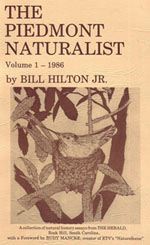 The Piedmont Naturalist, Volume 1 (1986)--long out-of-print--has been re-published by author Bill Hilton Jr. as an e-Book downloadable to read on your iPad, iPhone, Nook, Kindle, or desktop computer. Click on the image at left for information about ordering. All proceeds benefit education, research, and conservation work of Hilton Pond Center for Piedmont Natural History. The Piedmont Naturalist, Volume 1 (1986)--long out-of-print--has been re-published by author Bill Hilton Jr. as an e-Book downloadable to read on your iPad, iPhone, Nook, Kindle, or desktop computer. Click on the image at left for information about ordering. All proceeds benefit education, research, and conservation work of Hilton Pond Center for Piedmont Natural History. |
|
|
"This Week at Hilton Pond" is written and photographed by Bill Hilton Jr., executive director of Hilton Pond Center for Piedmont Natural History
|
|
|
If you Twitter, please refer
"This Week at Hilton Pond" to followers by clicking on this button: Tweet Follow us on Twitter: @hiltonpond |
Comments or questions about this week's installment? Send an E-mail to INFO. (Be sure to scroll down for a tally of birds banded/recaptured during the period, plus other nature notes.) |
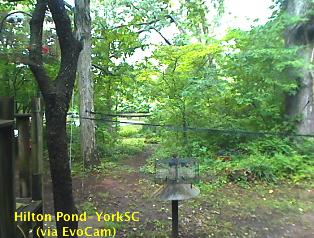
Click on image at right for live Web cam of Hilton Pond,
plus daily weather summary
Transmission of weather data from Hilton Pond Center via WeatherSnoop for Mac.
|
--SEARCH OUR SITE-- For a free on-line subscription to "This Week at Hilton Pond," send us an |
|
Thanks to the following fine folks for recent gifts in support of Hilton Pond Center for Piedmont Natural History and/or Operation RubyThroat: The Hummingbird Project. Your tax-deductible contributions allow us to continue writing, photographing, and sharing "This Week at Hilton Pond." Please see Support if you'd like to make a gift of your own.
|
If you enjoy "This Week at Hilton Pond," please help support Hilton Pond Center for Piedmont Natural History. It's painless, and YOU can make a difference! (Just CLICK on a logo below or send a check if you like; see Support for address.) |
|
Make credit card donations on-line via Network for Good: |
|
Use your PayPal account to make direct donations: |
|
If you like shopping on-line please become a member of iGive, through which 800+ on-line stores from Amazon to Lands' End and even iTunes donate a percentage of your purchase price to support Hilton Pond Center.  Every new member who registers with iGive and makes a purchase earns an ADDITIONAL $5 for the Center. You can even do Web searches through iGive and earn a penny per search--sometimes TWO--for the cause!Please enroll by going to the iGive Web site. It's a painless, important way for YOU to support our on-going work in conservation, education, and research. Add the iGive Toolbar to your browser and register Operation RubyThroat as your preferred charity to make it even easier to help Hilton Pond Center when you shop. Every new member who registers with iGive and makes a purchase earns an ADDITIONAL $5 for the Center. You can even do Web searches through iGive and earn a penny per search--sometimes TWO--for the cause!Please enroll by going to the iGive Web site. It's a painless, important way for YOU to support our on-going work in conservation, education, and research. Add the iGive Toolbar to your browser and register Operation RubyThroat as your preferred charity to make it even easier to help Hilton Pond Center when you shop. |
|

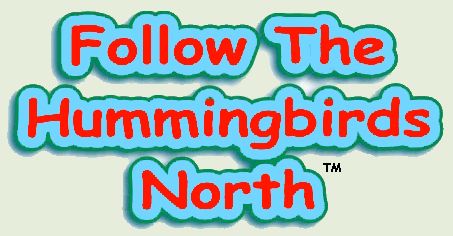
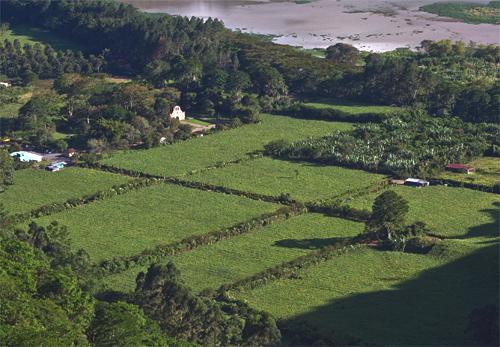
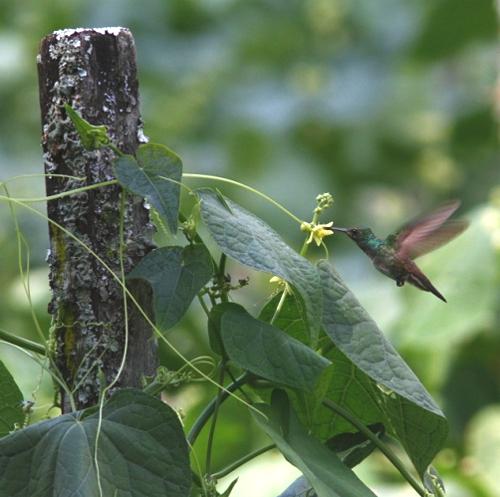
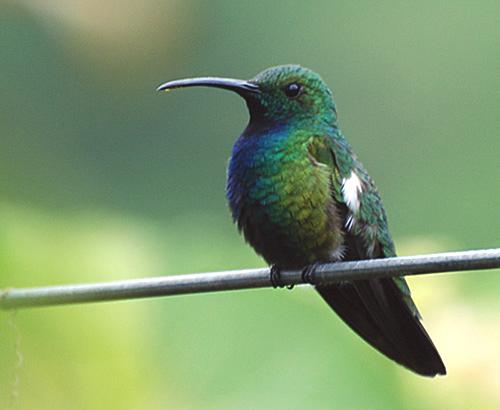
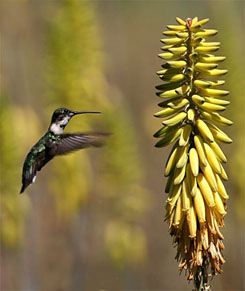 A similar situation occurs in January and February at our other Costa Rican study site--the Aloe Vera plantations in Guanacaste Province on the country's Pacific Slope. There we see Ruby-throated Hummingbirds
A similar situation occurs in January and February at our other Costa Rican study site--the Aloe Vera plantations in Guanacaste Province on the country's Pacific Slope. There we see Ruby-throated Hummingbirds 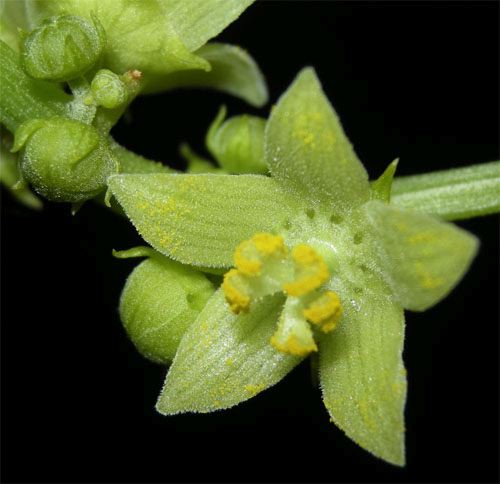
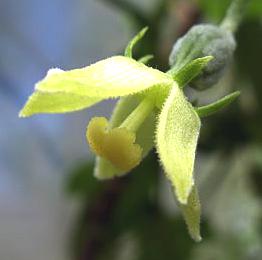 but both are rather open
but both are rather open 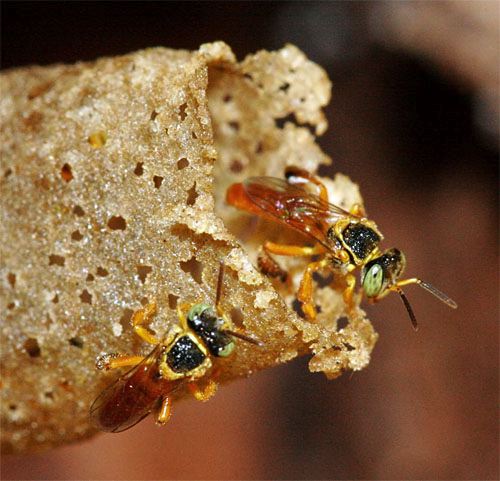
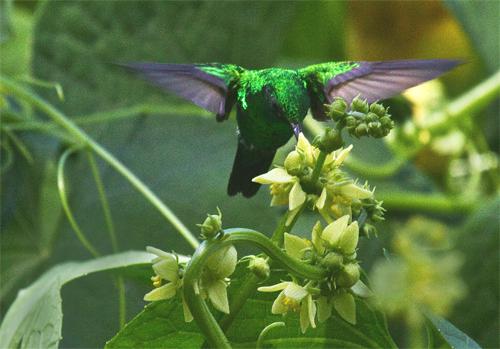
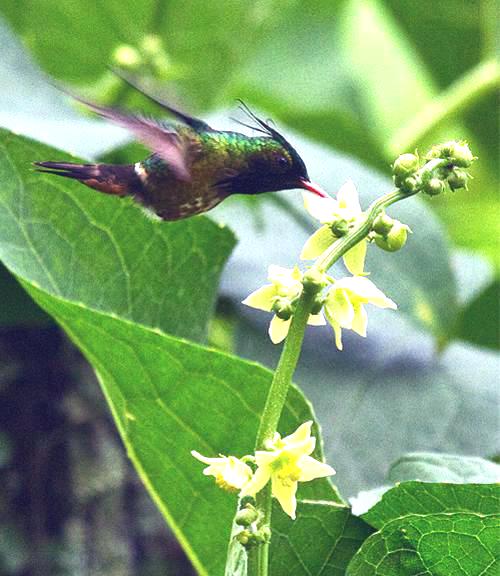
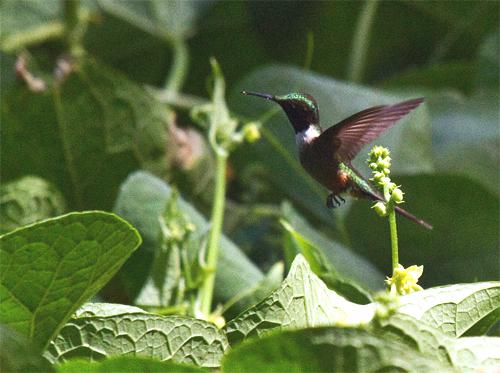
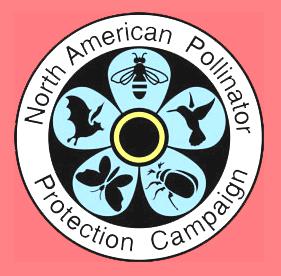 Recent installments of "This Week at Hilton Pond" have dealt with our just-completed citizen science excursion for the first-ever bandings of Ruby-throated Hummingbirds in eastern Costa Rica--where they "weren't supposed to be" but where Ernesto Carman Jr. first discovered them a year or so ago. We also devoted an entire photo essay to the diversity of 13 hummer species we caught, and we mentioned hummingbirds appear to be principal pollinators of Chayote in the Ujarrás Valley fields. We found it curious that none of this seemed to pique the interest of hummer experts on several bird-related listservs to which we subscribe, and we got no comments at all from the "hummingbird people." The "pollinator people" were another matter, however, and we received several excited responses from our post to the listserv for the North American Pollinator Protection Campaign with which Hilton Pond Center is a collaborator.
Recent installments of "This Week at Hilton Pond" have dealt with our just-completed citizen science excursion for the first-ever bandings of Ruby-throated Hummingbirds in eastern Costa Rica--where they "weren't supposed to be" but where Ernesto Carman Jr. first discovered them a year or so ago. We also devoted an entire photo essay to the diversity of 13 hummer species we caught, and we mentioned hummingbirds appear to be principal pollinators of Chayote in the Ujarrás Valley fields. We found it curious that none of this seemed to pique the interest of hummer experts on several bird-related listservs to which we subscribe, and we got no comments at all from the "hummingbird people." The "pollinator people" were another matter, however, and we received several excited responses from our post to the listserv for the North American Pollinator Protection Campaign with which Hilton Pond Center is a collaborator.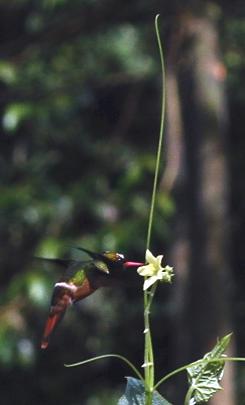 We heard first from the U.S. Department of Agriculture's Dr. Jim Cane, who has done extensive work on solitary bees as pollinators of food plants in the Cucumber Family
We heard first from the U.S. Department of Agriculture's Dr. Jim Cane, who has done extensive work on solitary bees as pollinators of food plants in the Cucumber Family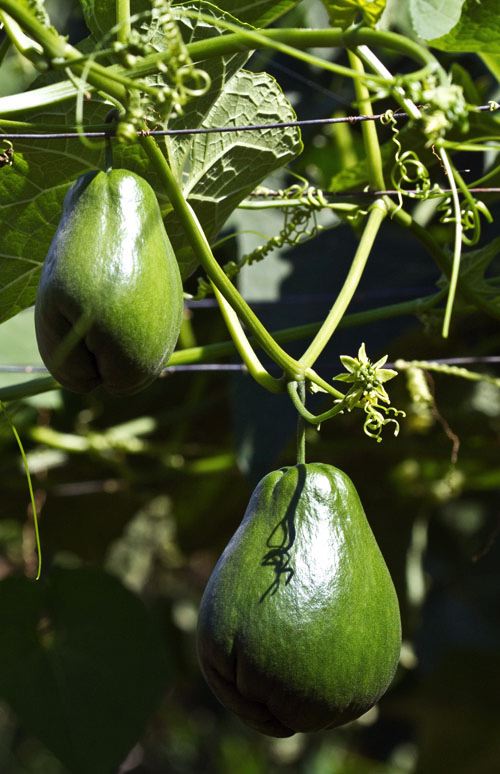

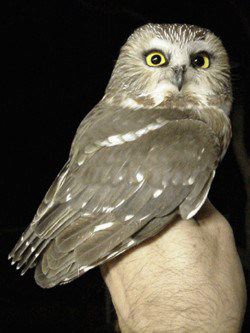
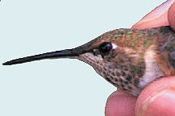 Oct 15 to Mar 15:
Oct 15 to Mar 15: